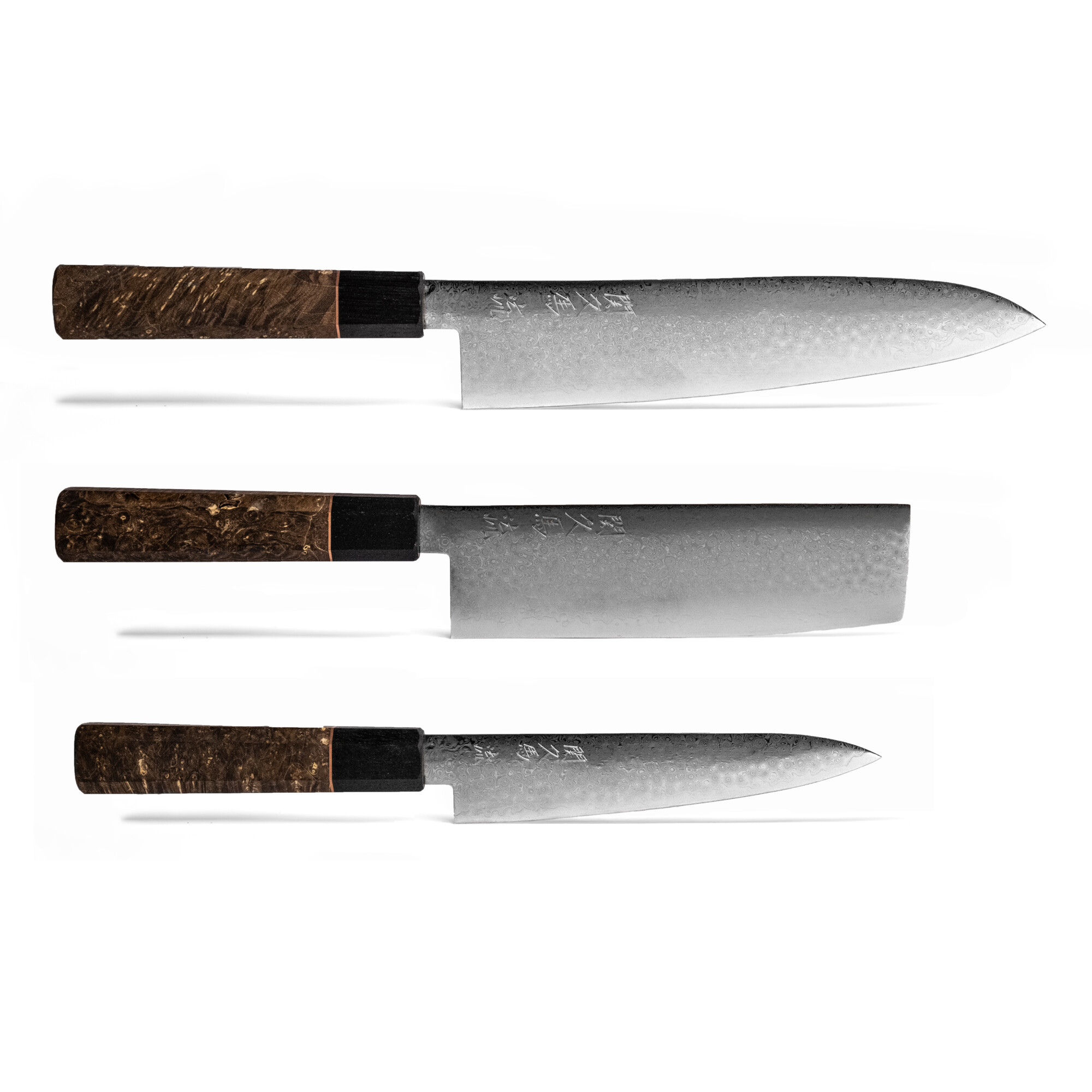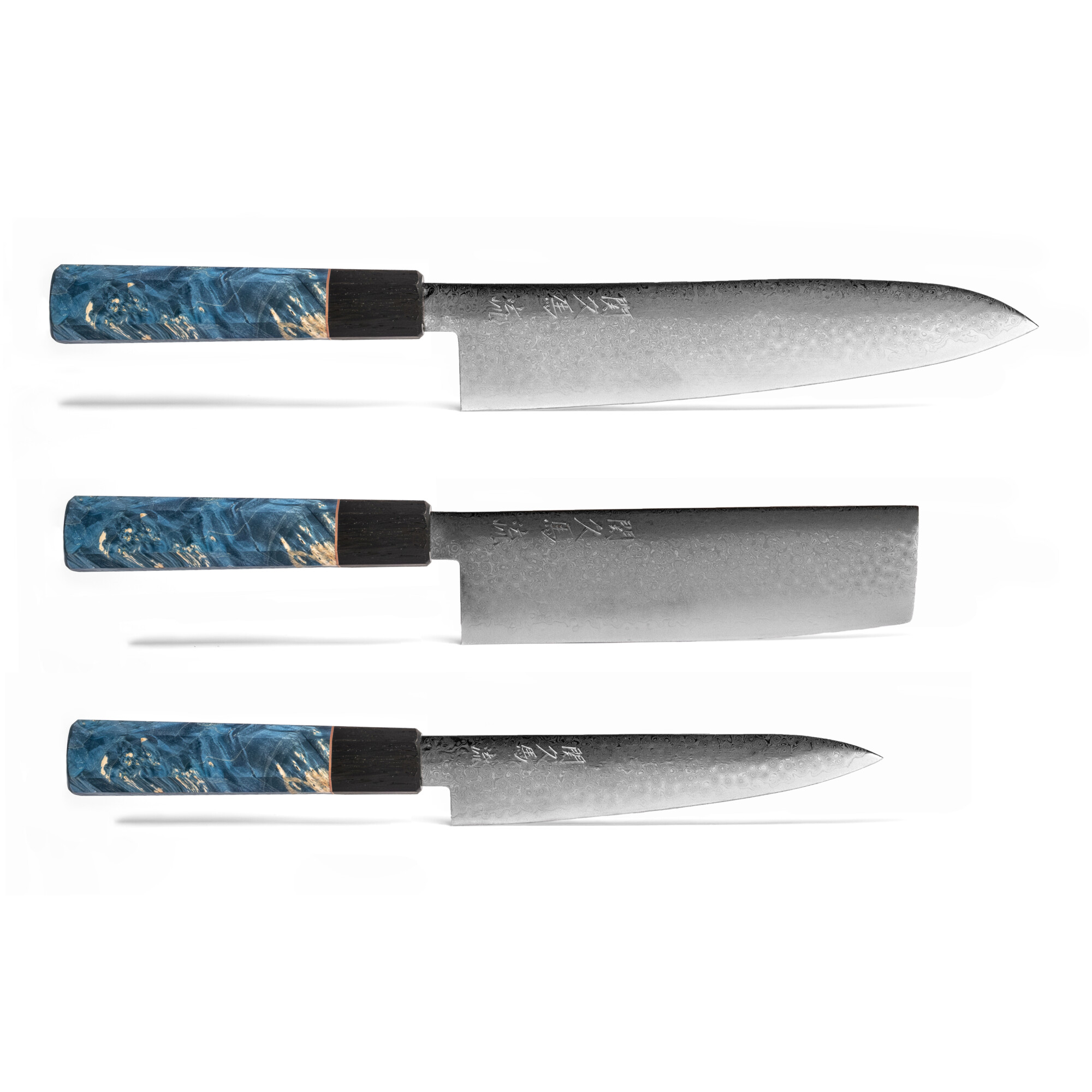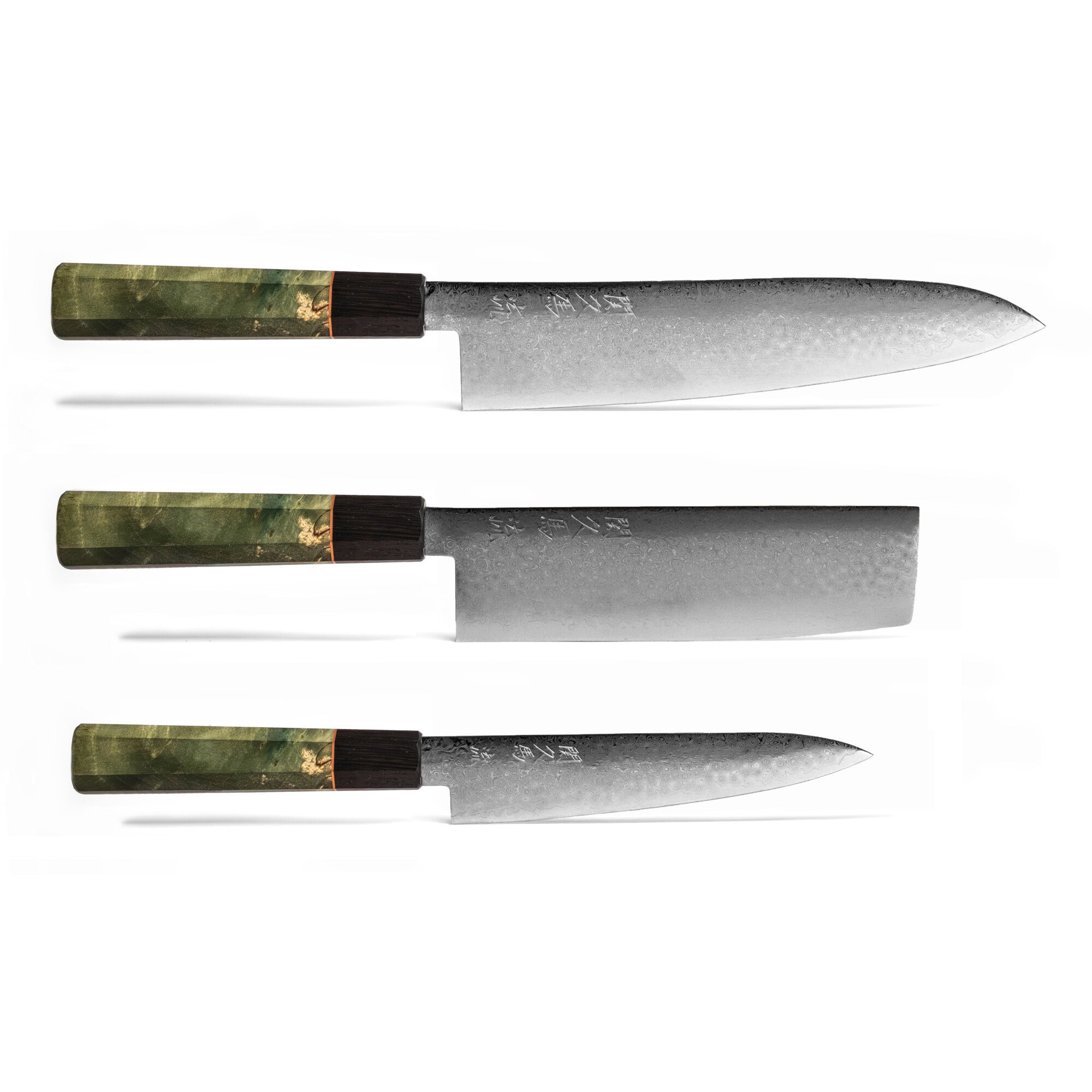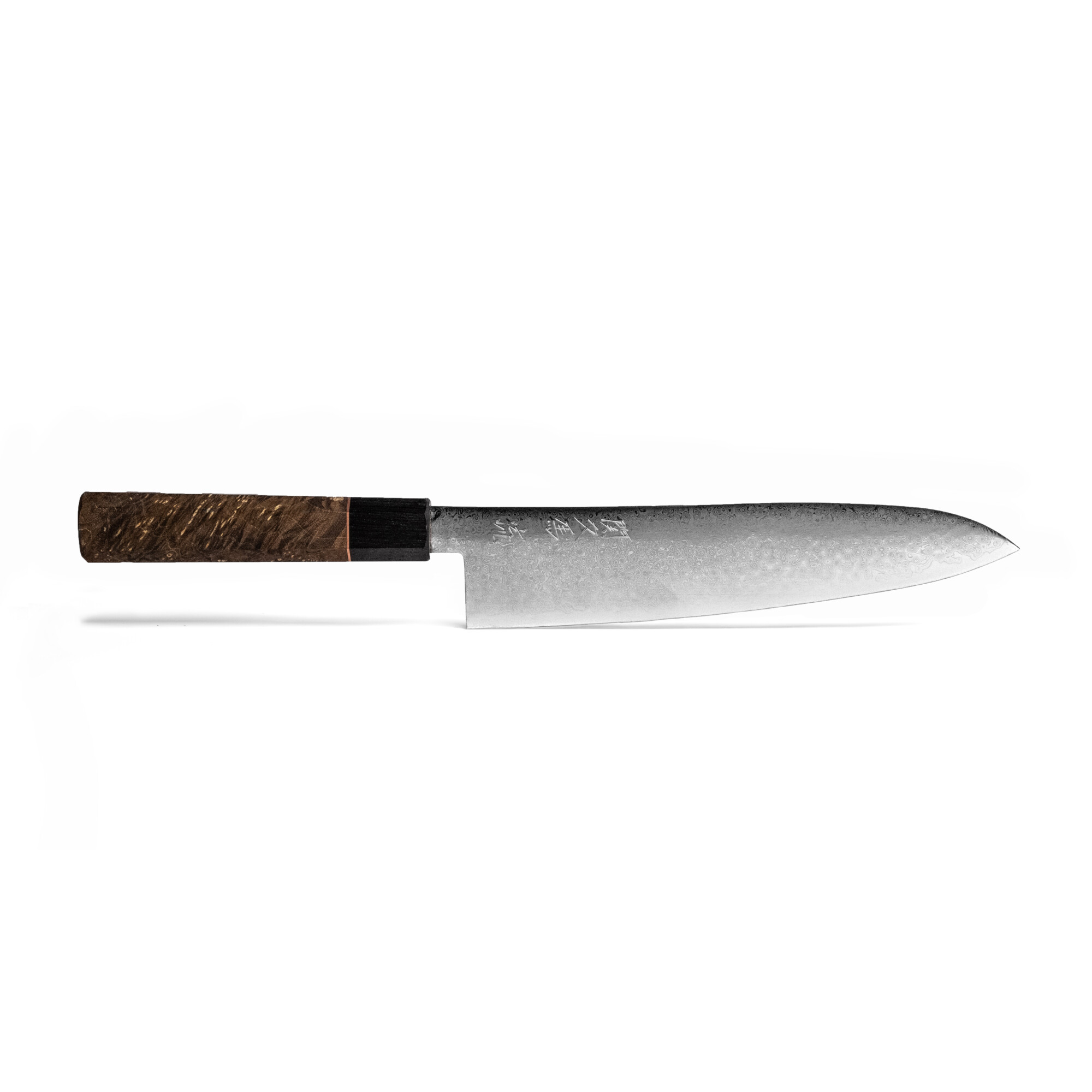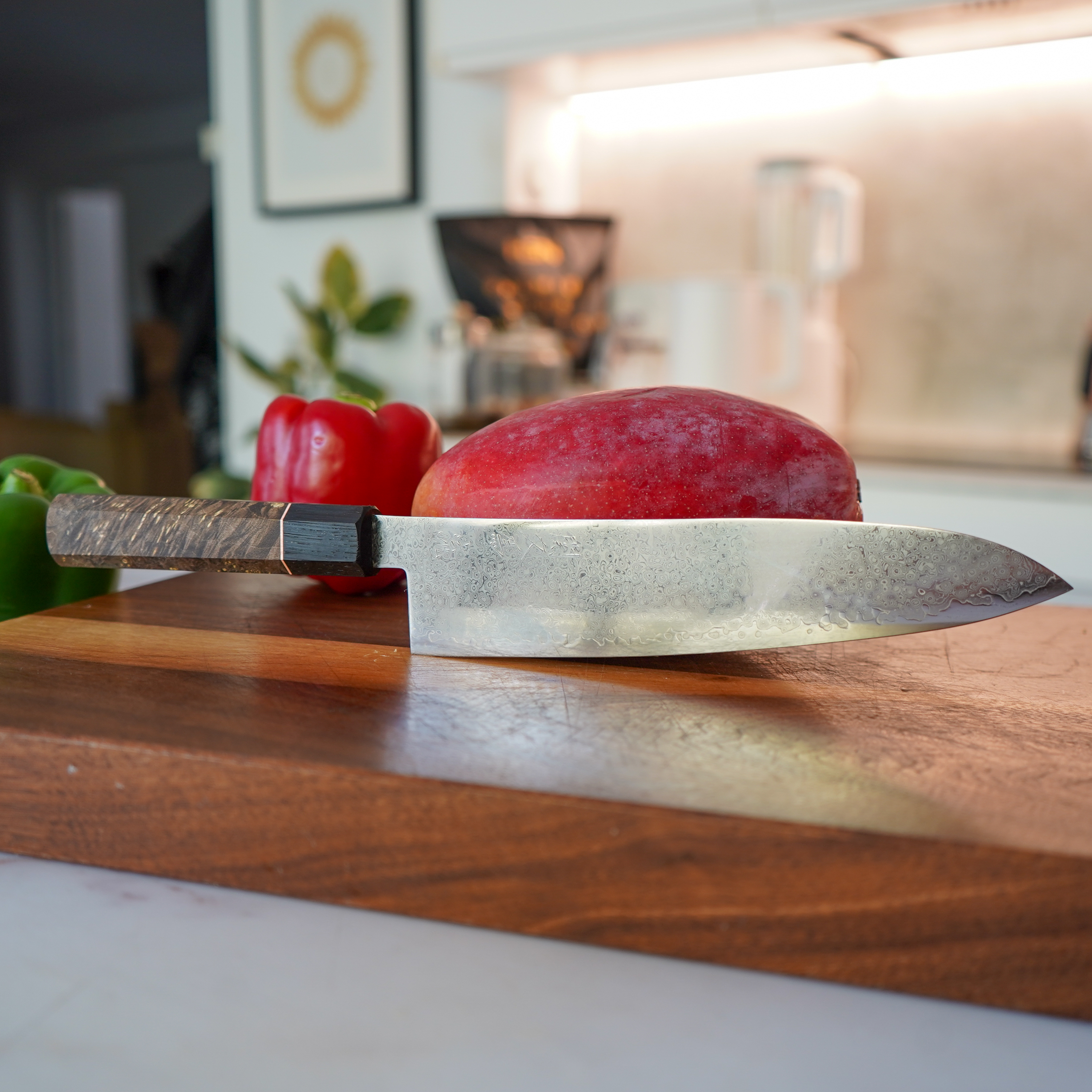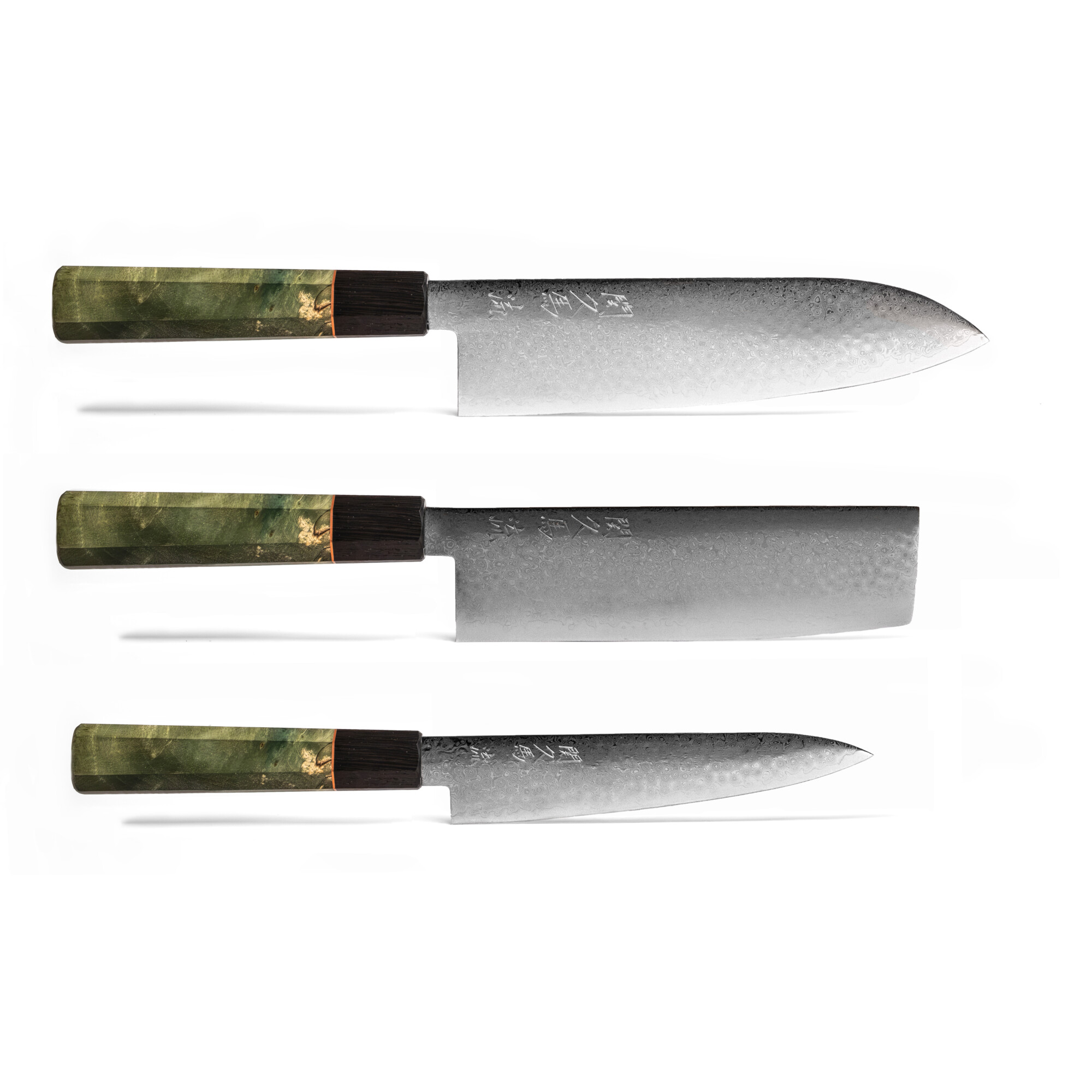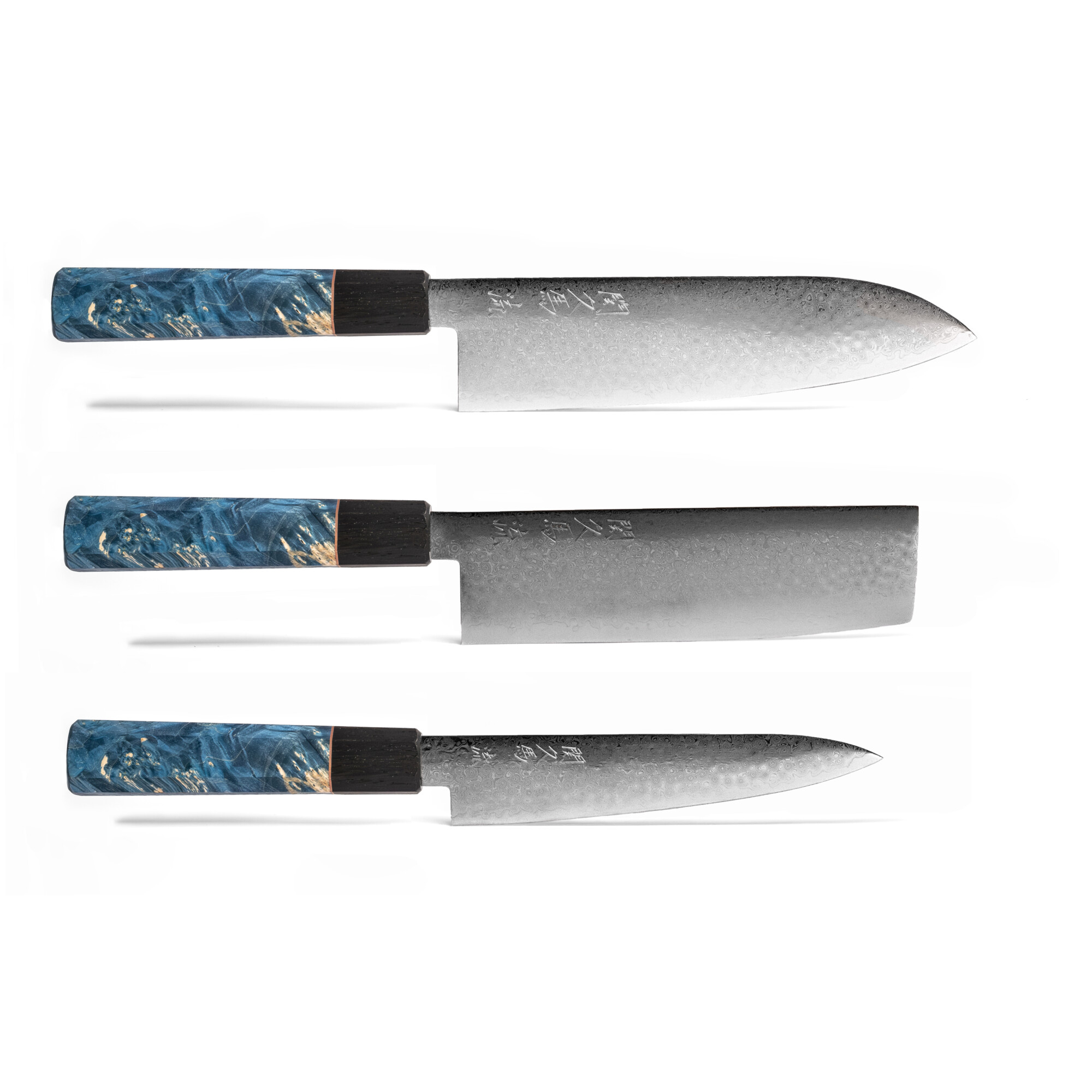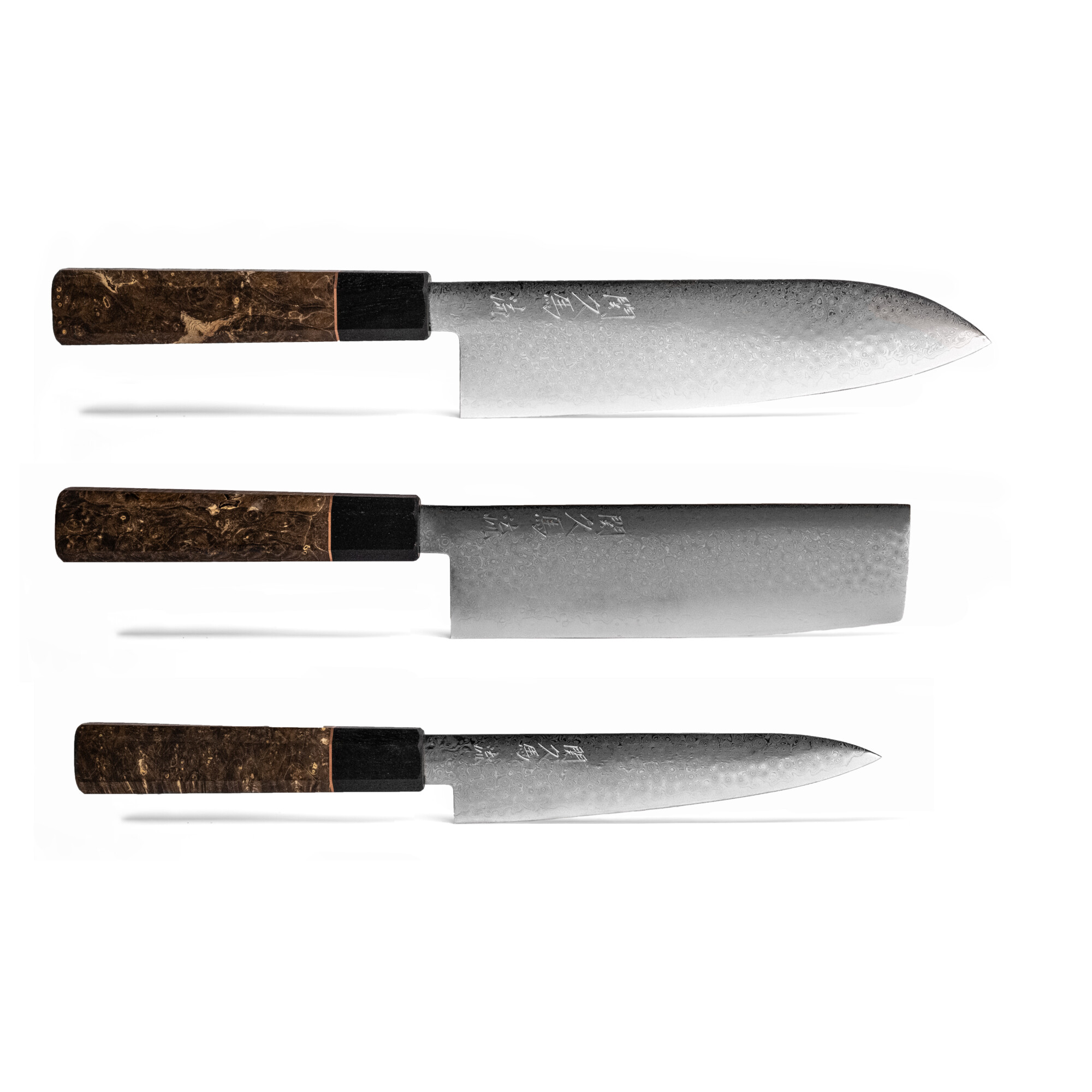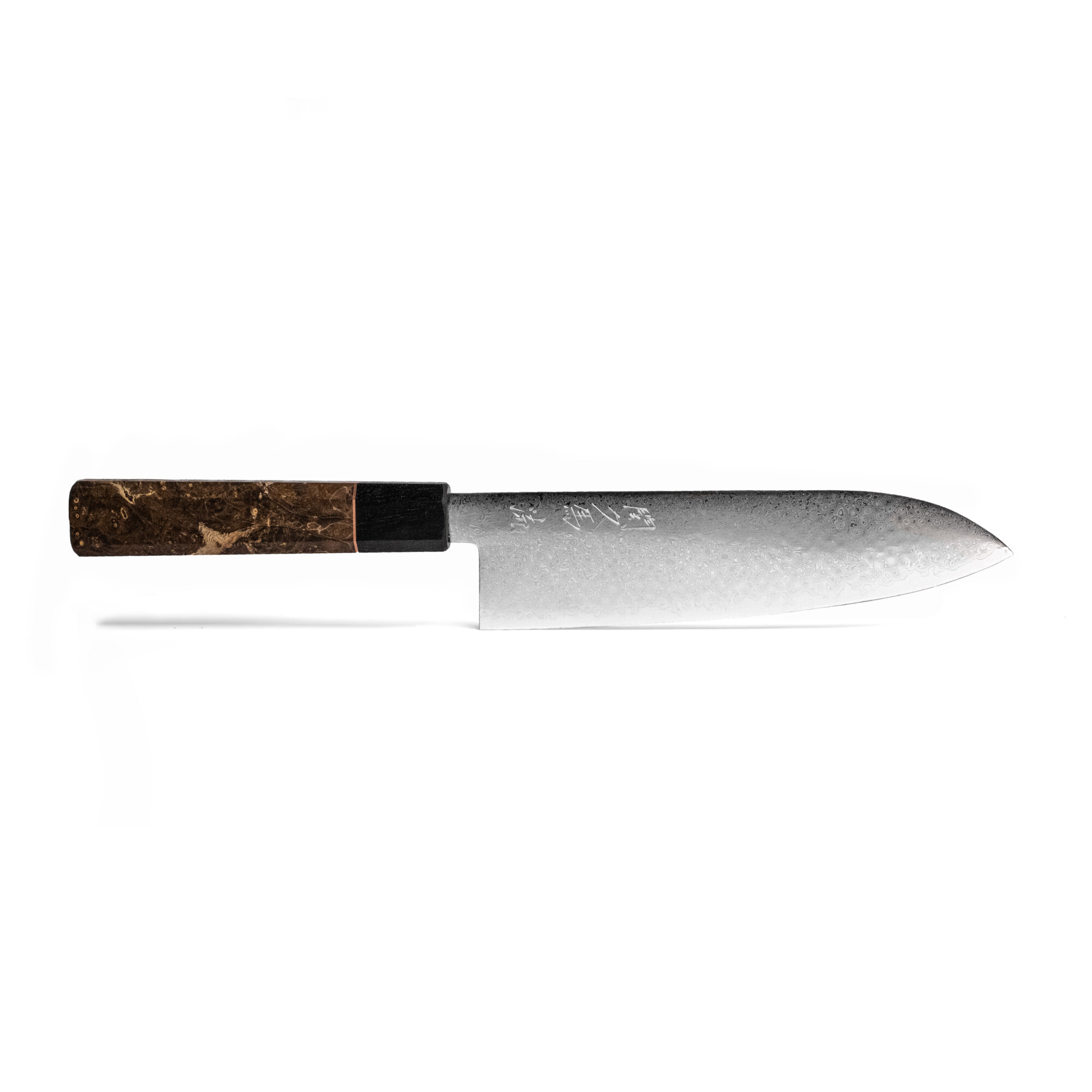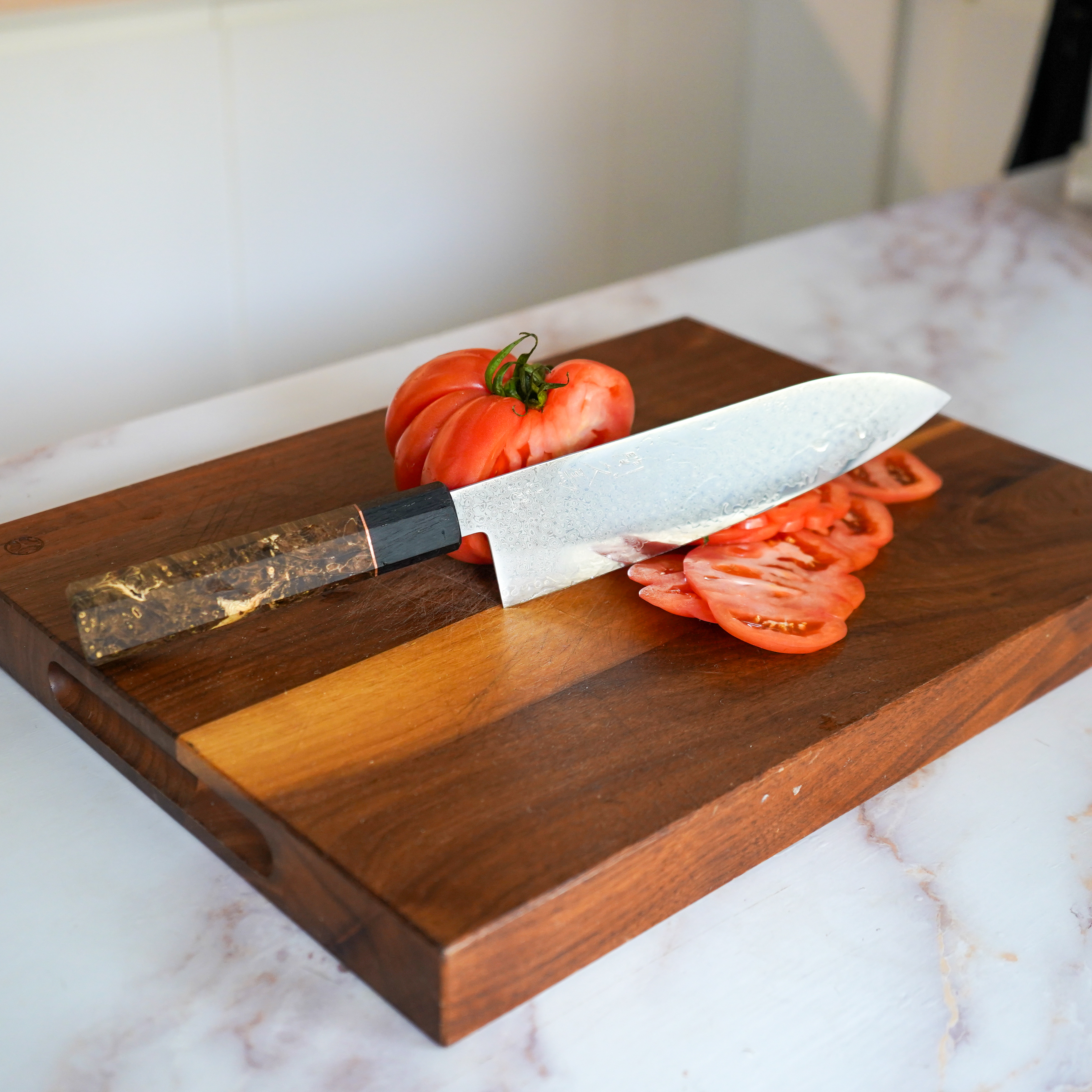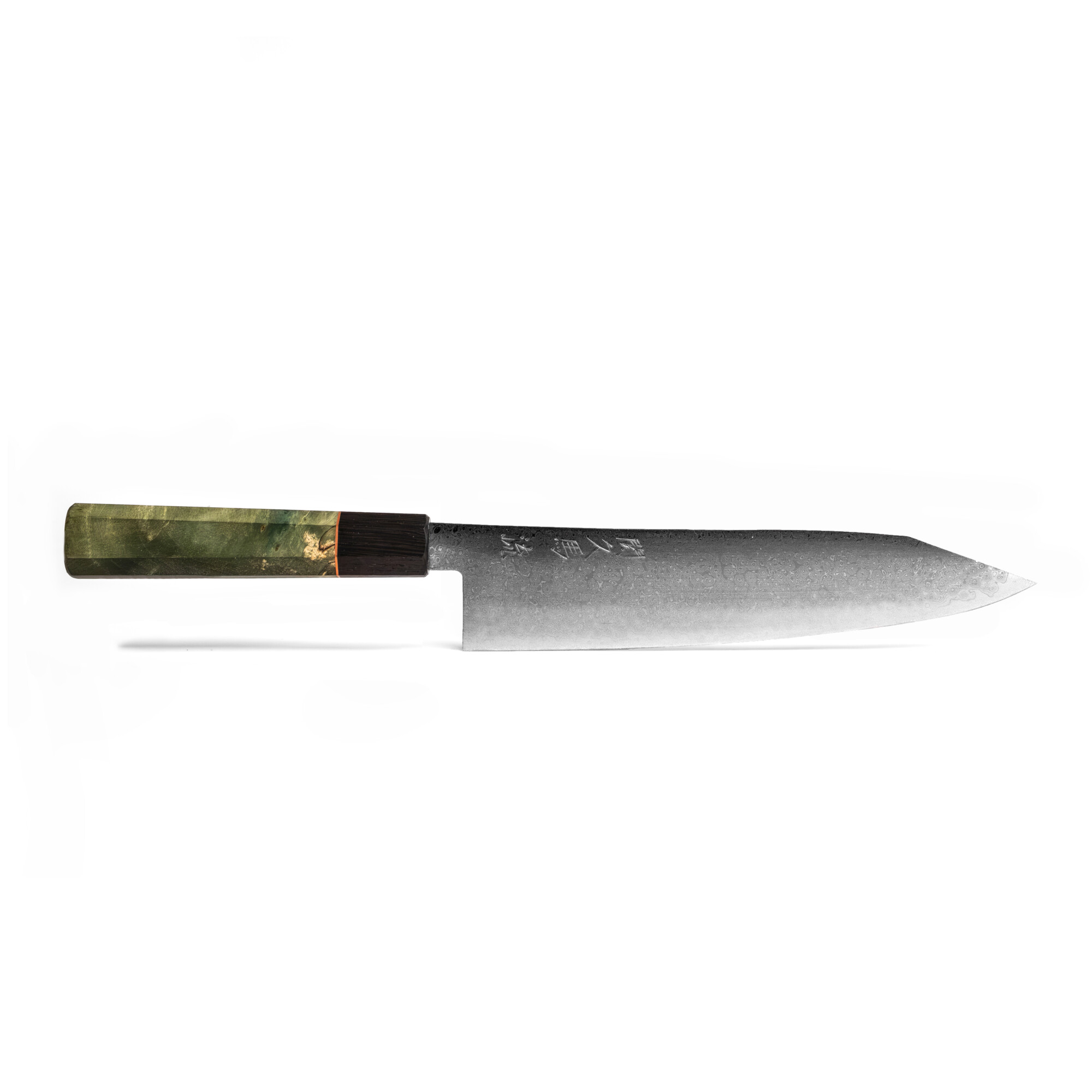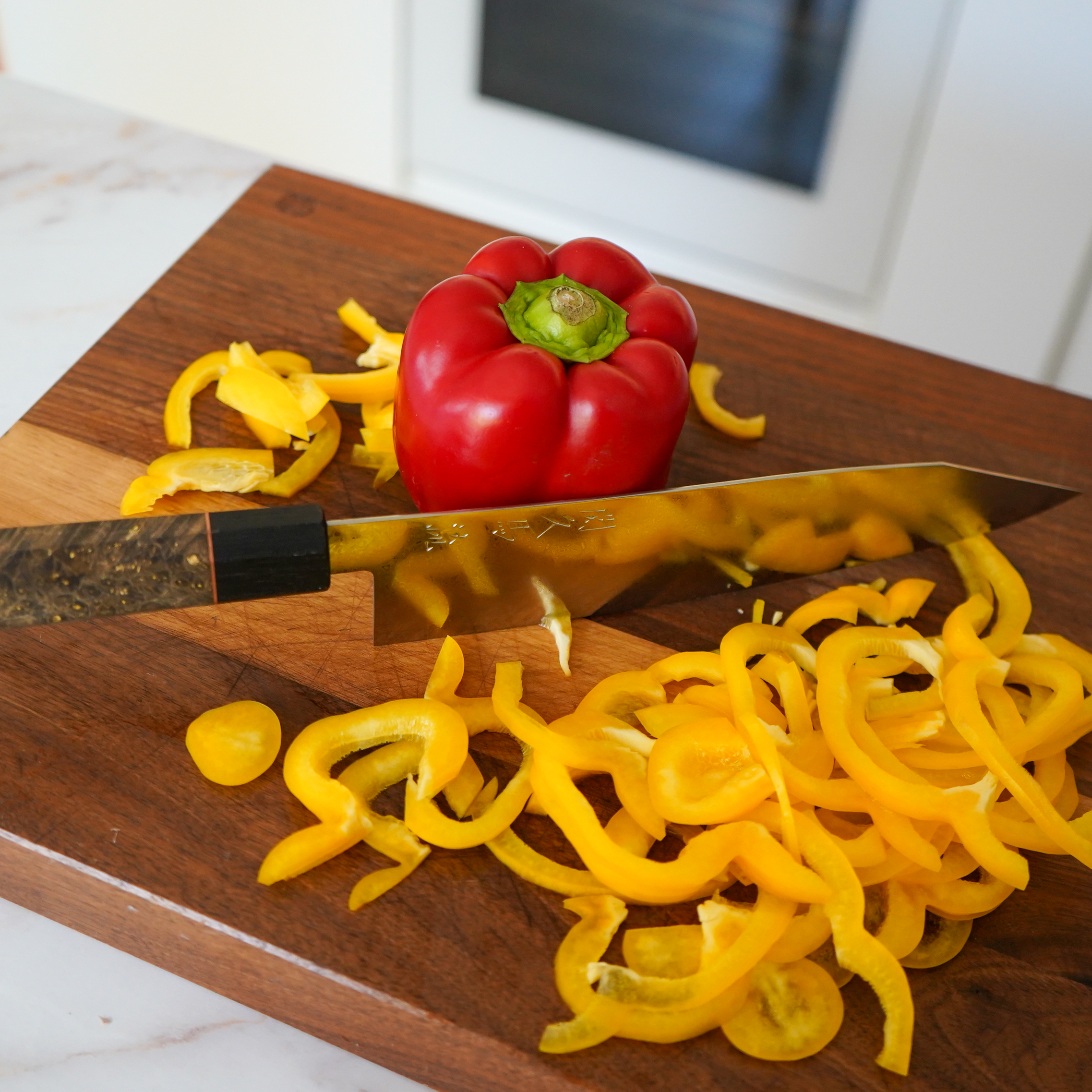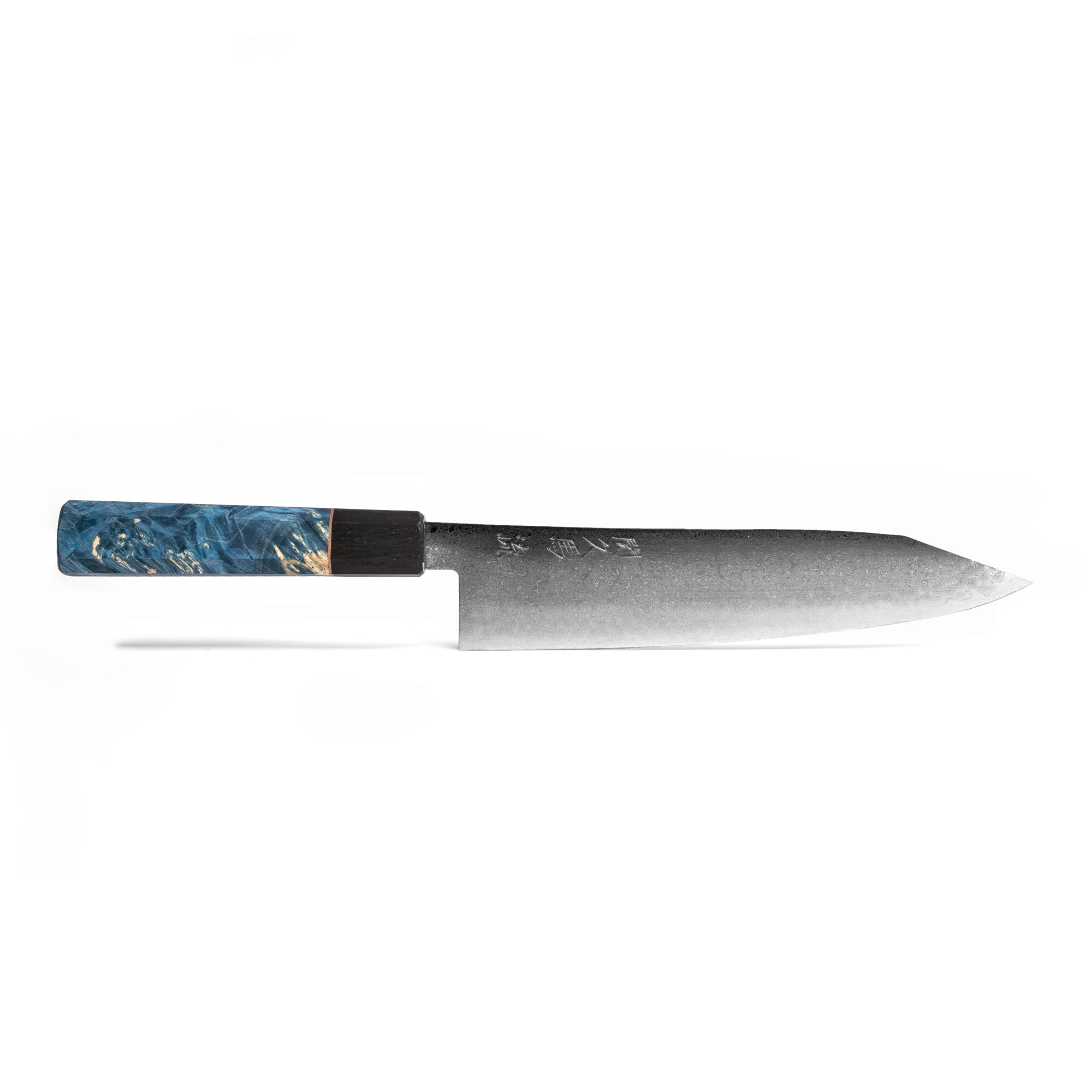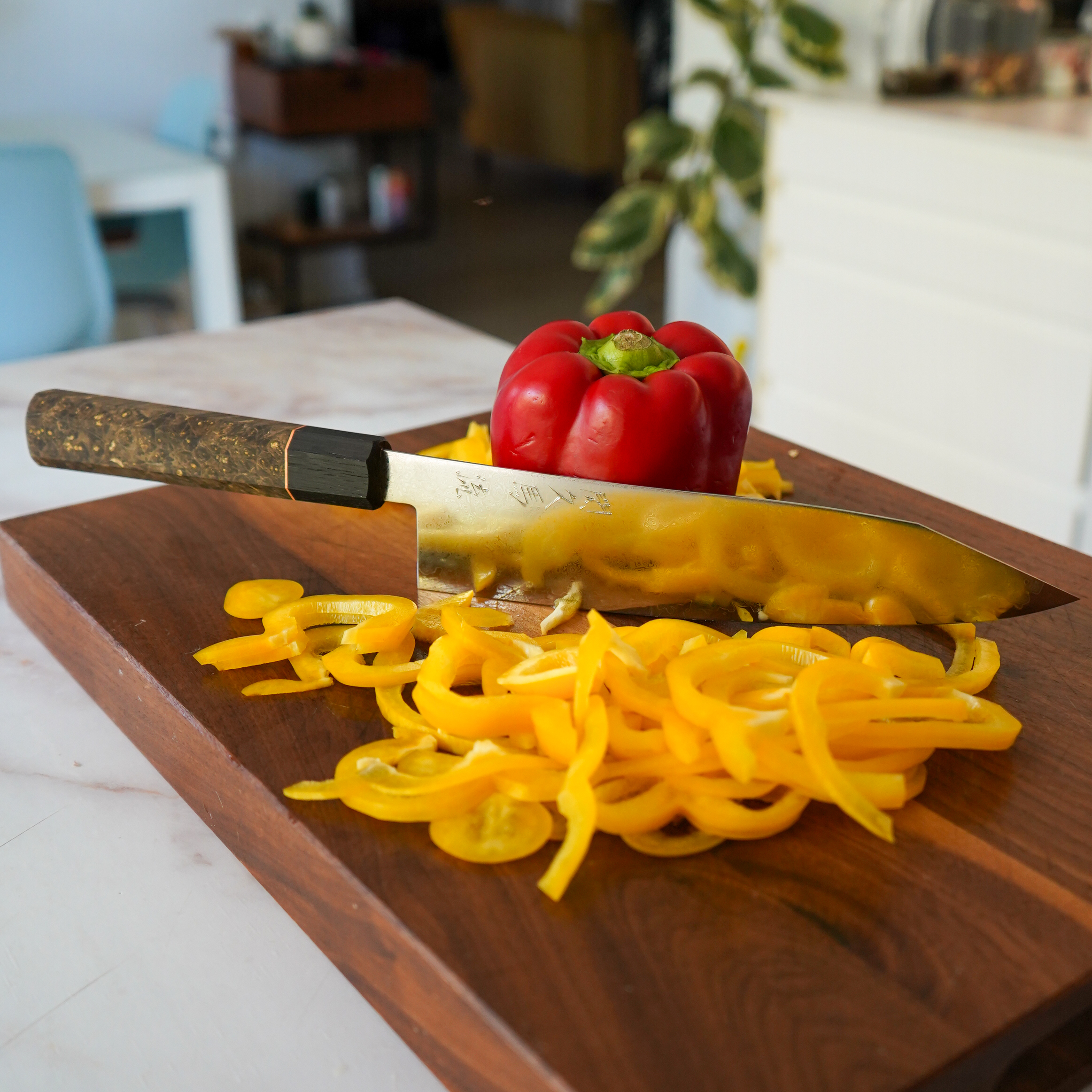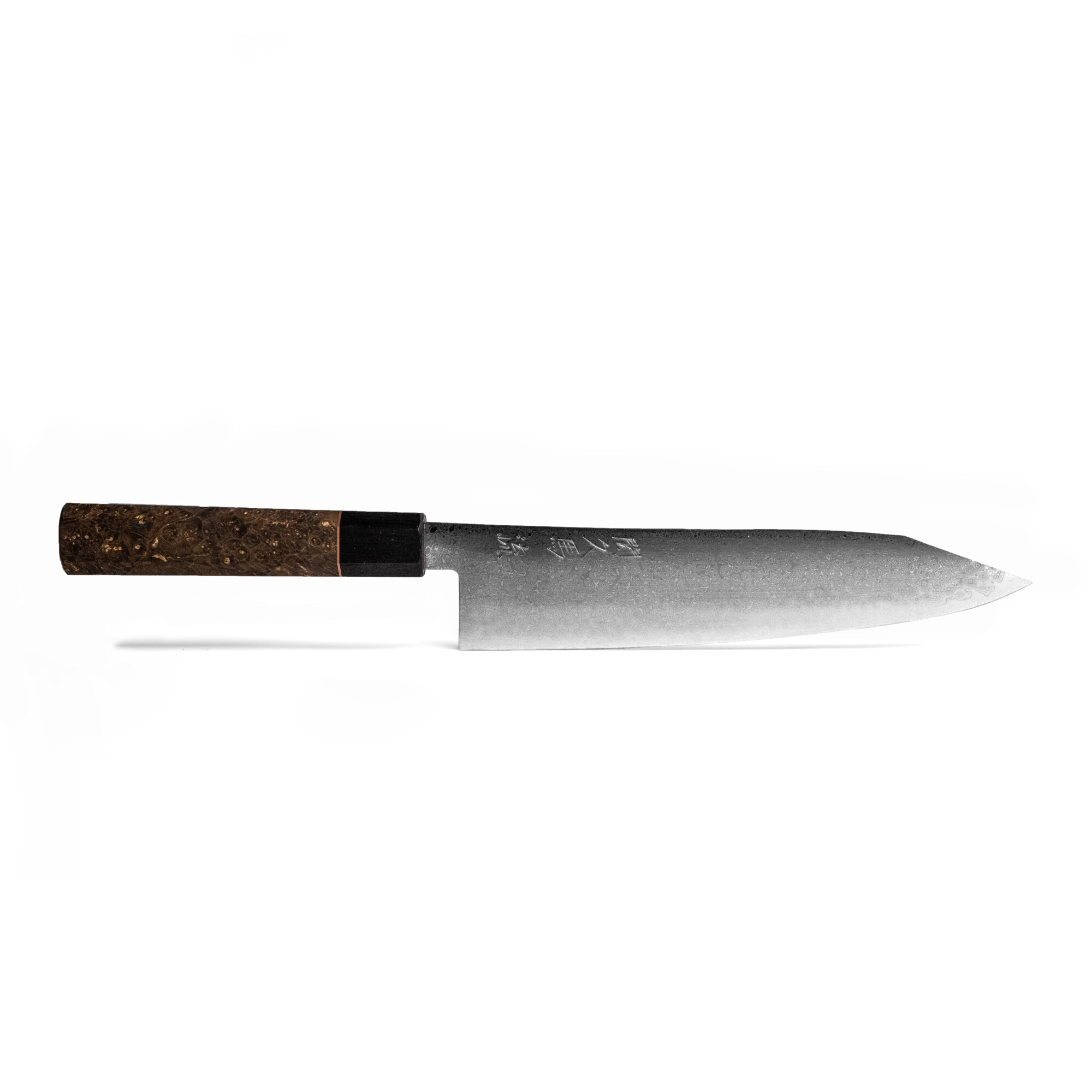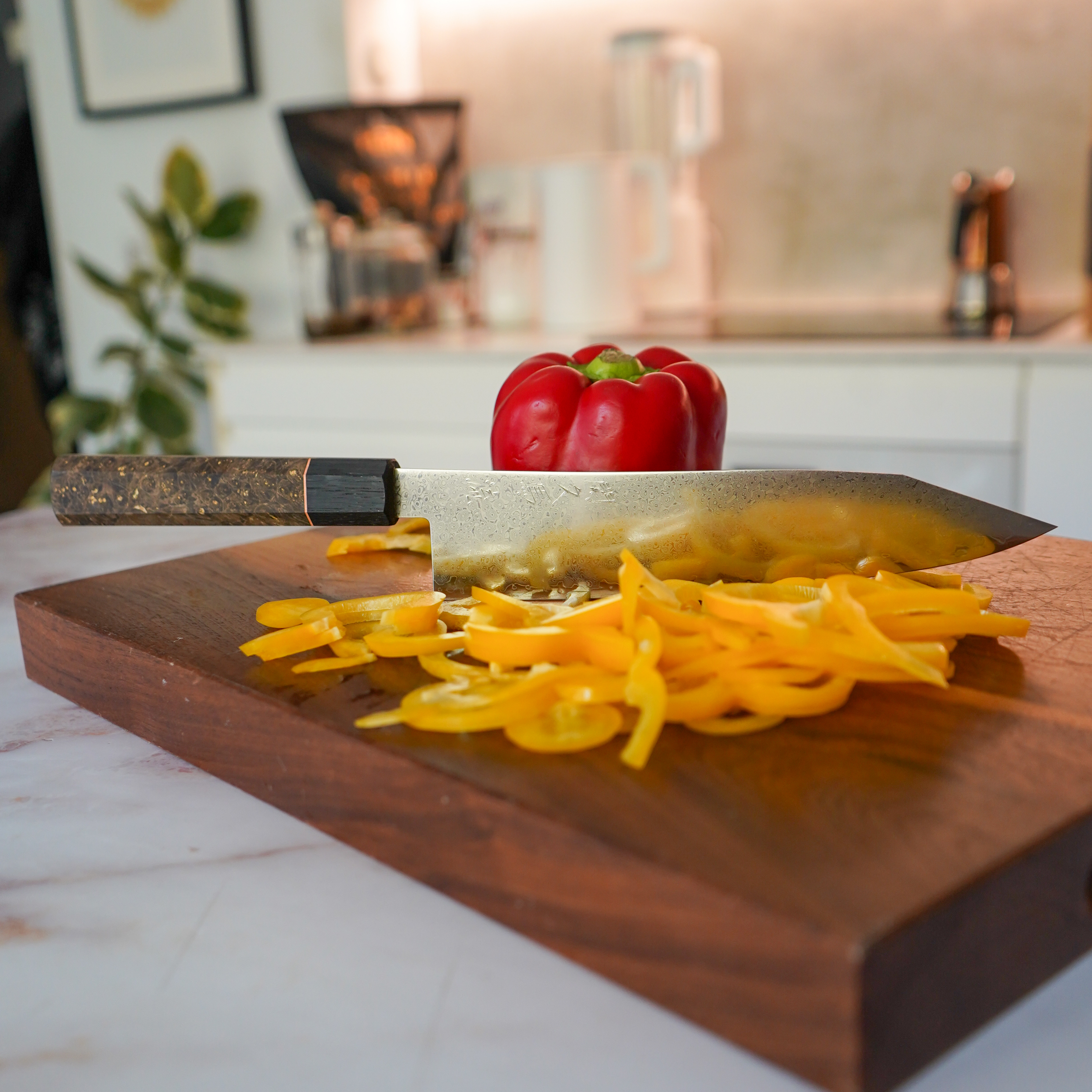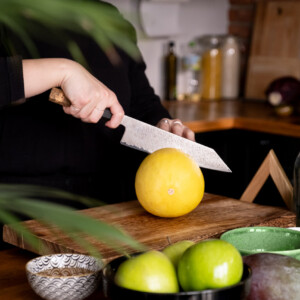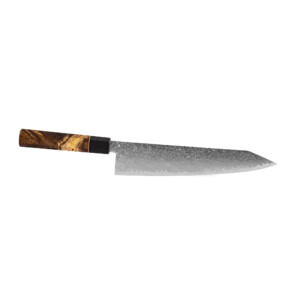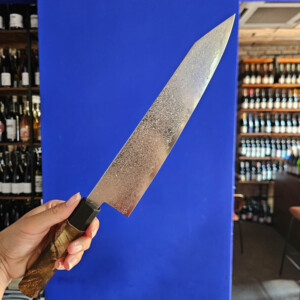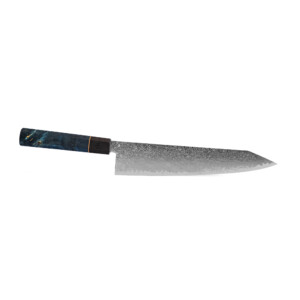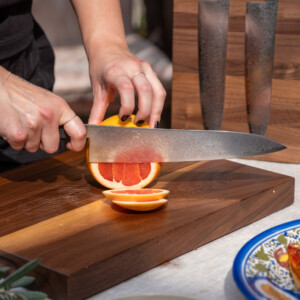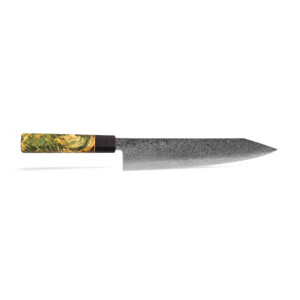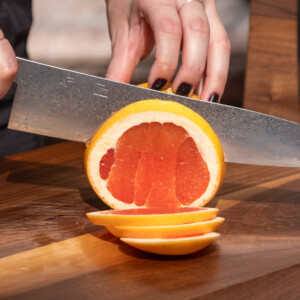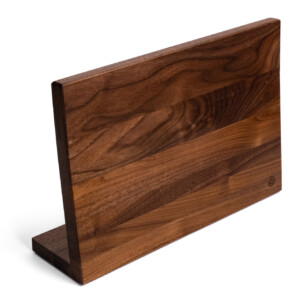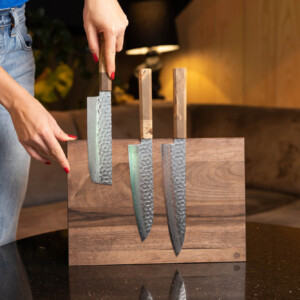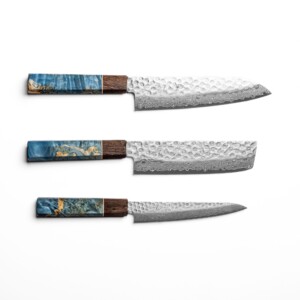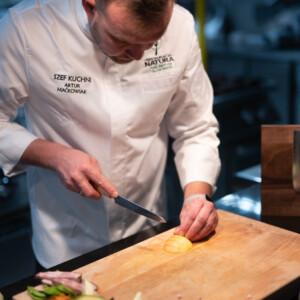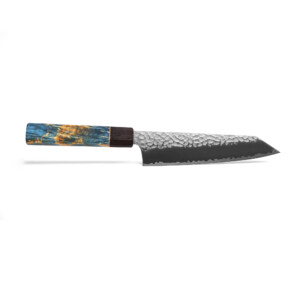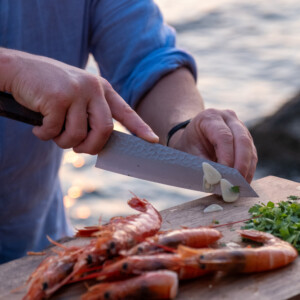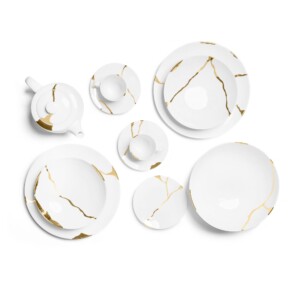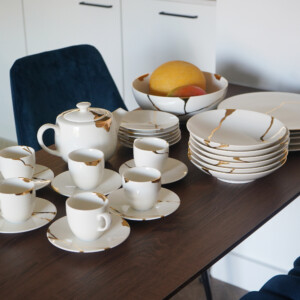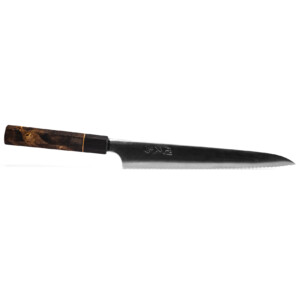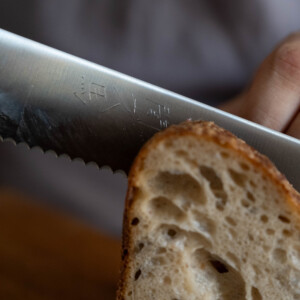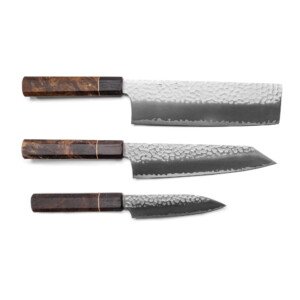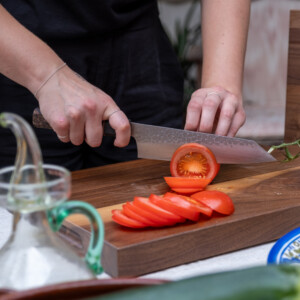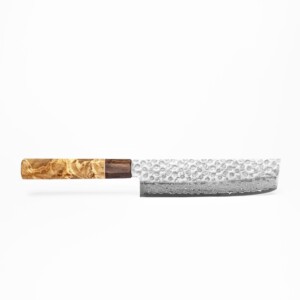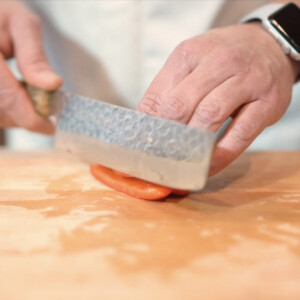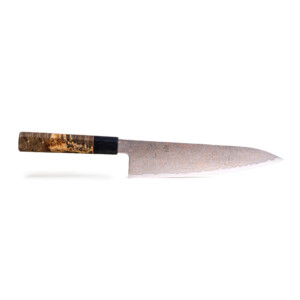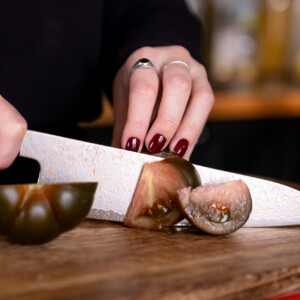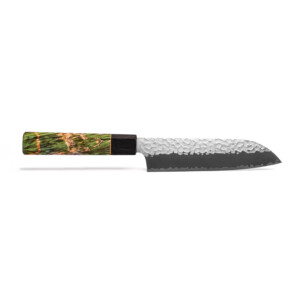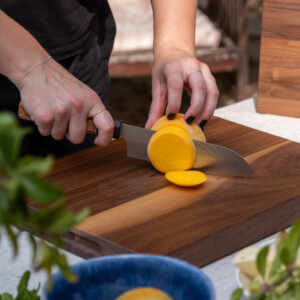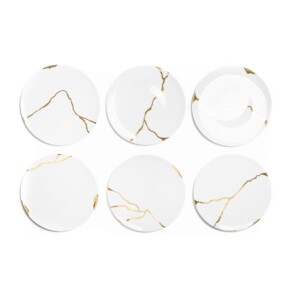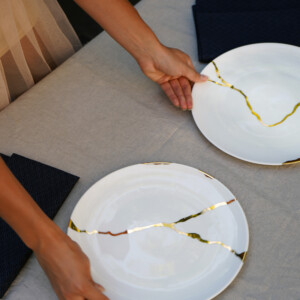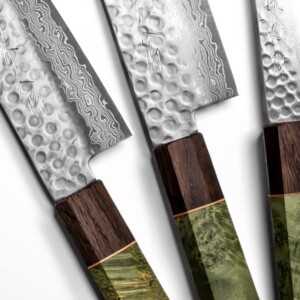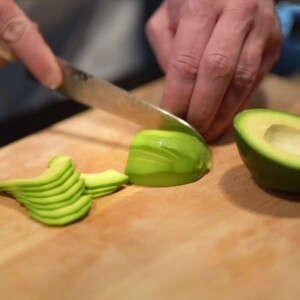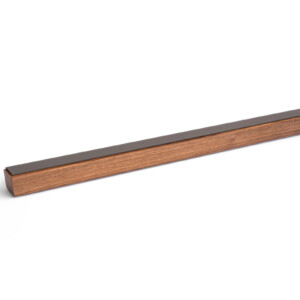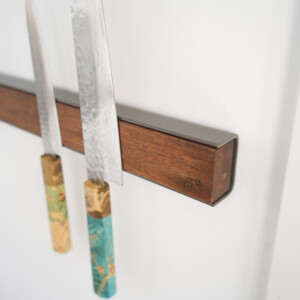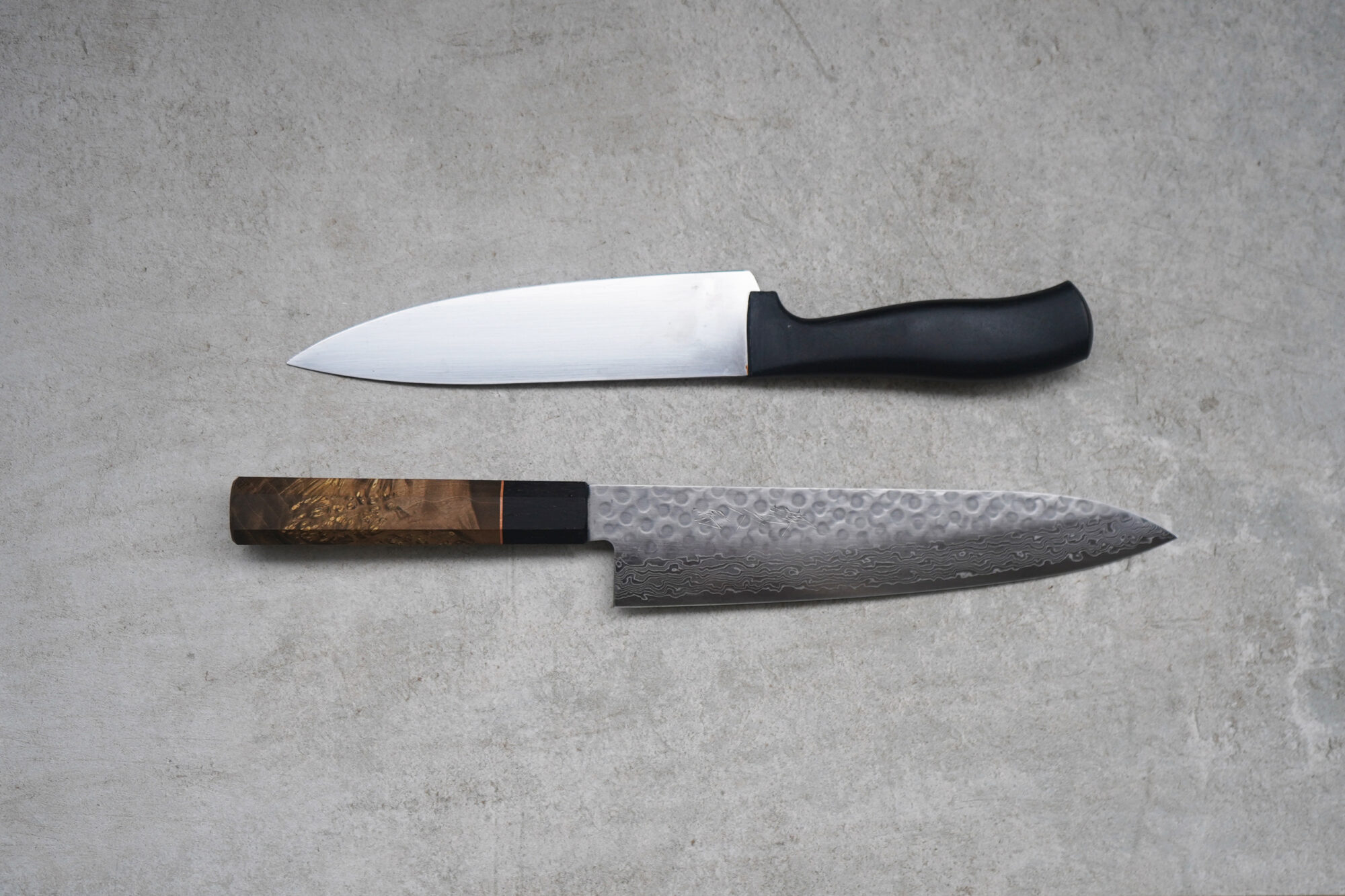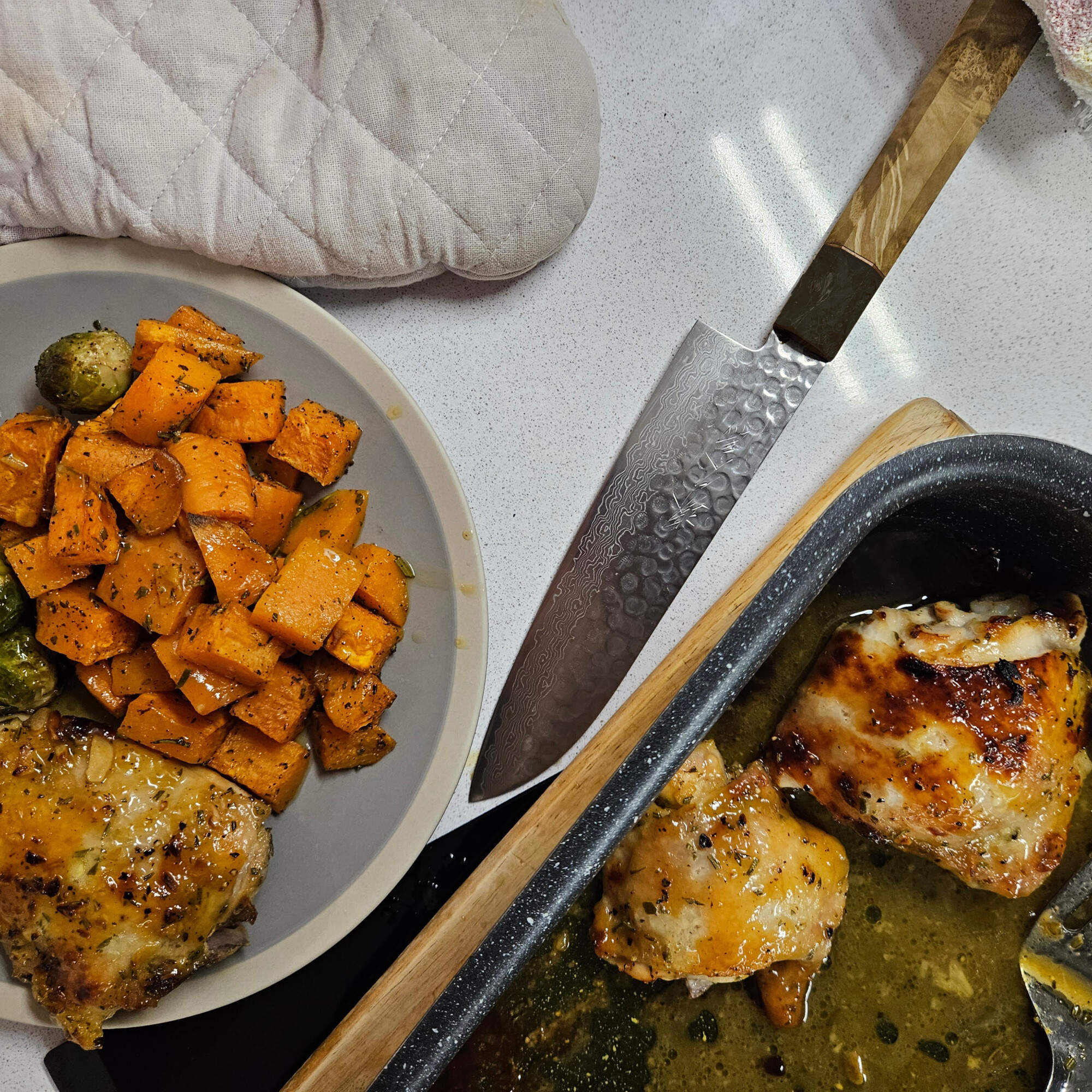For anyone venturing into the world of Japanese kitchen knives, the variety of styles can be overwhelming. Among the most popular options are the Gyuto, Santoku, Bunka, and Kiritsuke – each with distinctive shapes, purposes, and histories. Understanding the differences between these knives will not only help you make a more informed purchase but also enhance your cooking experience by matching the right tool to your cutting needs.
As someone who once stood confused in front of a display of Japanese knives, I understand the challenge of distinguishing between these seemingly similar yet fundamentally different blade styles. This comprehensive guide will walk you through the unique characteristics of each knife type, their ideal uses, and how to choose the perfect blade for your cooking style.
The Japanese Knife Philosophy
Before diving into specific knife types, it’s important to understand the Japanese approach to kitchen cutlery. While Western knife traditions often emphasise versatility (the classic chef’s knife designed to handle almost any task), Japanese knife culture traditionally favours specialisation – creating unique blade shapes optimised for specific ingredients and cutting techniques.
Modern Japanese knives often bridge these philosophies, offering specialised designs that remain versatile enough for everyday use. This balance of specialisation and practicality is precisely what makes knives like the Gyuto, Santoku, Bunka, and Kiritsuke so appealing to both professional chefs and home cooks.
Gyuto: The Japanese Chef's Knife
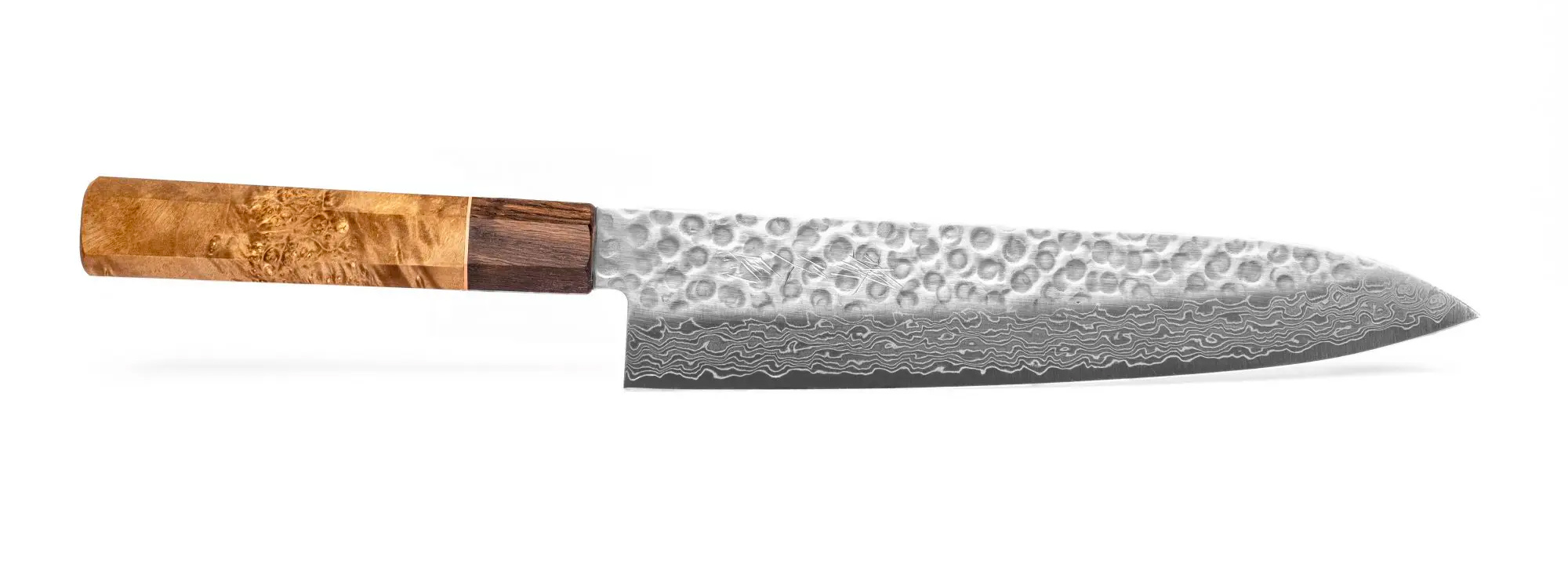
Origins and Design
The Gyuto (牛刀), which translates to “cow sword” or “beef knife,” was originally designed for cutting meat but has evolved into Japan’s answer to the Western chef’s knife. Developed during the Meiji era when Western influence began permeating Japanese culture, the Gyuto represents a fusion of Eastern craftsmanship with Western functionality.
A typical Gyuto features:
- A curved blade profile, especially towards the tip
- A pointed tip for precision work
- A double-bevelled edge (sharpened on both sides)
- Blade lengths typically ranging from 180mm to 270mm (7-10.5 inches)
- A relatively tall blade height, providing good knuckle clearance
Performance and Uses
The Gyuto excels as an all-purpose knife that can handle nearly any kitchen task. Its curved edge facilitates a rocking motion when chopping herbs or mincing, while its pointed tip allows for precise work like trimming meat or making detailed cuts.
The versatility of the Gyuto makes it ideal for:
- Slicing, dicing, and chopping vegetables
- Cutting and trimming proteins (meat, fish, poultry)
- Rocking cuts for herbs and garlic
- Precision work requiring a fine tip
For many chefs, a quality Gyuto is the essential cornerstone of their knife collection – if you could own just one Japanese knife, many experts would recommend starting with a Gyuto.
Who Should Choose a Gyuto?
A Gyuto is perfect for:
- Cooks who want one primary knife for multiple tasks
- Those transitioning from Western chef’s knives to Japanese cutlery
- Cooks who employ both rocking and push-cutting techniques
- Anyone who prepares a wide variety of ingredients regularly
Santoku: The Three Virtues Knife
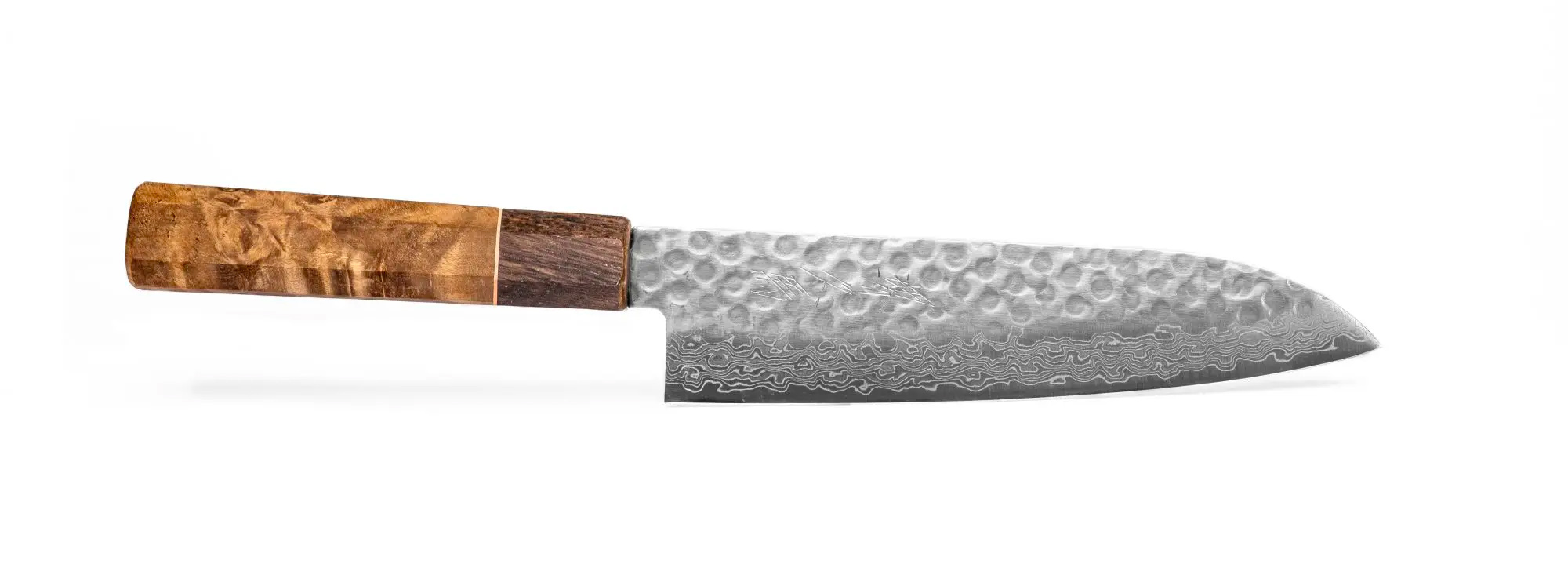
Origins and Design
The Santoku (三徳) is a relatively modern Japanese knife design, developed in the mid-20th century. Its name translates to “three virtues” or “three uses,” referring to its excellence in cutting meat, fish, and vegetables – essentially, the primary categories of ingredients in Japanese cuisine.
A typical Santoku features:
- A shorter blade (typically 165-180mm/6.5-7 inches)
- A sheep’s foot tip (rounded with a downward curve)
- A flatter edge profile with minimal curve
- A double-bevelled edge
- A taller blade height, often with a “flatter” appearance
Performance and Uses
The Santoku’s design emphasises up-and-down chopping motions rather than the rocking cuts favoured by Western techniques. The flatter edge makes clean contact with the cutting board, while the sheep’s foot tip provides safety and utility.
The Santoku excels at:
- Precision vegetable cutting
- Clean slices through boneless proteins
- Push-cutting and chop cutting techniques
- Transfer of cut ingredients (using the wide blade face)
Many home cooks find the Santoku particularly user-friendly due to its manageable size and versatility. The shorter length makes it more nimble and less intimidating than longer knives, while still providing enough cutting surface for most household tasks.
Who Should Choose a Santoku?
A Santoku is ideal for:
- Cooks with smaller hands or those who prefer a more compact knife
- Those who primarily use chopping rather than rocking motions
- Home cooks looking for an all-purpose knife that’s less intimidating than a Gyuto
- People who prepare lots of vegetables and boneless proteins
Bunka: The Cultural Knife

Origins and Design
The Bunka (文化), meaning “culture” in Japanese, is often considered the Santoku’s more angular cousin. This knife emerged from the same modern Japanese knife tradition but features distinctive design elements that set it apart in both aesthetics and function.
A typical Bunka features:
- A medium-length blade (usually 165-180mm/6.5-7 inches)
- A distinctive “reverse tanto” tip (angled point with a flat edge)
- A relatively flat cutting edge
- A double-bevelled edge
- A tall blade profile
- Often features a tsuchime (hammered) finish
Performance and Uses
The Bunka’s standout feature is its reverse tanto tip, which excels at precision work while maintaining strength. This design allows for detailed cutting tasks where the tip is heavily involved, such as scoring, decorative cutting, or working in tight spaces.
The Bunka particularly shines at:
- Precision vegetable cutting, especially fine dice and brunoise
- Detailed work requiring a strong, precise tip
- Push-cutting techniques
- Processing smaller ingredients with accuracy
While similar to the Santoku in many ways, the Bunka offers more precision for detailed tasks while maintaining excellent general-purpose performance.
Who Should Choose a Bunka?
A Bunka is perfect for:
- Cooks who appreciate precision and detail work
- Those who process lots of vegetables and require fine control
- Anyone who loves the aesthetics of traditional Japanese knives with modern functionality
- Cooks looking for a knife that bridges traditional and contemporary techniques
Kiritsuke: The Executive Chef's Knife

Origins and Design
The Kiritsuke (切付) is perhaps the most distinctive and traditionally prestigious of these four knife styles. In traditional Japanese kitchens, the Kiritsuke was reserved for the executive chef (Itamae), serving as a symbol of rank and skill.
A traditional Kiritsuke features:
- A long blade (240-300mm/9.5-12 inches)
- A distinctive angled tip
- A straight, flat edge
- Traditionally single-bevelled (though double-bevelled versions exist)
- A tall blade height
- A characteristic elegant, sloping profile
Modern versions, sometimes called Kiritsuke-Gyuto, often feature a double-bevelled edge to make them more accessible to Western users and cooking techniques.
Performance and Uses
The traditional single-bevelled Kiritsuke essentially combines the functionality of two specialised Japanese knives: the Yanagiba (sashimi knife) and the Usuba (vegetable knife). This makes it extraordinarily versatile in skilled hands but also demanding in terms of technique.
The Kiritsuke excels at:
- Precise slicing of fish and other proteins
- Clean vegetable cutting
- Fine, detailed work with the angled tip
- Creating beautiful, presentation-worthy cuts
Mastering the Kiritsuke requires proper technique and understanding of its unique cutting dynamics, particularly with traditional single-bevelled versions.
Who Should Choose a Kiritsuke?
A Kiritsuke is ideal for:
- Experienced cooks looking to expand their Japanese knife collection
- Those who appreciate the knife’s cultural significance and distinctive aesthetics
- Cooks who have mastered proper Japanese cutting techniques
- Anyone seeking a prestigious, multi-functional knife for both protein and vegetable preparation
Beginners might consider starting with a double-bevelled Kiritsuke-Gyuto, which offers more forgiveness while retaining much of the traditional design’s elegance.
Direct Comparisons: How They Differ
Now that we’ve explored each knife individually, let’s directly compare them across key aspects:
Blade Profile and Cutting Technique
- Gyuto: Features a curved edge that supports both rocking and push-cutting. Its design is most similar to Western chef’s knives, making it accessible to those familiar with European cutting techniques.
- Santoku: Has a flatter edge with minimal curve, optimised for up-and-down chopping and push-cutting. Not ideal for rocking cuts.
- Bunka: Similar to the Santoku with its flat edge, but the reverse tanto tip allows for more precise detail work and better tip control.
- Kiritsuke: Features an entirely flat edge designed exclusively for pull and push-cutting techniques. Requires proper technique and doesn’t accommodate rocking motions at all.
Size and Manoeuvrability
- Gyuto: Typically the longest of the four, ranging from 180mm to 270mm (7-10.5 inches). Offers excellent versatility but may feel unwieldy for those with smaller hands or limited counter space.
- Santoku: Usually 165-180mm (6.5-7 inches), offering a more compact and manoeuvrable option that still provides enough cutting surface for most home cooking tasks.
- Bunka: Similar in length to the Santoku (165-180mm), offering excellent balance between size and control.
- Kiritsuke: Traditionally the longest, often 240-300mm (9.5-12 inches), requiring more space and skill to manoeuvre effectively.
Tip Design and Functionality
- Gyuto: Features a pointed tip that excels at precision work like trimming fat, detailed cuts, or getting into tight spaces.
- Santoku: Has a rounded sheep’s foot tip that provides safety and utility but less precision for tip work.
- Bunka: The reverse tanto tip offers excellent precision while maintaining strength, making it exceptional for detailed cutting where the tip is heavily involved.
- Kiritsuke: The angled tip combines precision with elegance, allowing for beautiful slicing and detail work in experienced hands.
Learning Curve and Accessibility
- Gyuto: Most accessible to Western cooks due to its similarity to a traditional chef’s knife. Accommodates familiar cutting techniques.
- Santoku: Very accessible with a shallow learning curve. Its compact size and balanced design make it user-friendly for beginners.
- Bunka: Slightly steeper learning curve than the Santoku due to its more specialised tip, but still quite accessible to most home cooks.
- Kiritsuke: Steepest learning curve, especially in traditional single-bevelled form. Requires proper technique and understanding of Japanese cutting dynamics.
Choosing Between Them: Practical Considerations
With all this information in mind, how do you decide which knife is right for you? Consider these practical factors:
Cooking Style and Ingredients
- If you prepare a wide variety of foods and value versatility above all, the Gyuto is likely your best choice.
- If you primarily chop vegetables and boneless proteins in a home kitchen, the Santoku offers an excellent balance of functionality and ease of use.
- If you enjoy precise vegetable preparation and detail work, the Bunka provides unique capabilities while remaining versatile.
- If you’re experienced with Japanese knives and want a prestigious, specialised tool that excels at both proteins and vegetables, the Kiritsuke might be right for you.
Hand Size and Comfort
- Larger hands often find the longer Gyuto or Kiritsuke more comfortable and balanced.
- Smaller hands typically prefer the compact dimensions of the Santoku or Bunka.
- Consider the handle type as well – traditional Japanese handles (wa-handles) offer a different grip than Western-style handles.
Kitchen Space
- Limited counter space might make the more compact Santoku or Bunka more practical.
- Larger kitchens can easily accommodate the longer Gyuto or Kiritsuke.
Skill Level and Technique
- Beginners often find the Santoku most forgiving and intuitive.
- Those familiar with Western chef’s knives will transition most easily to a Gyuto.
- The Bunka offers a slight challenge that rewards those looking to refine their technique.
- The Kiritsuke, especially in traditional form, is best suited to experienced users who understand Japanese cutting techniques.
Can One Knife Do It All?
While each of these knives offers impressive versatility, there’s no perfect “one knife does everything” solution. Even the most versatile Gyuto has limitations with very specialised tasks like breaking down large cuts of meat or creating the paper-thin slices needed for sashimi.
That said, if you’re looking to minimise your collection while maximising functionality:
- The Gyuto offers the greatest all-around versatility and can handle 90% of kitchen tasks effectively.
- The Santoku provides excellent general performance in a more compact package, ideal for everyday home cooking.
- The Bunka balances general purpose capability with specialised precision for those who value detail work.
- The Kiritsuke, especially in double-bevelled form, can serve multiple roles but requires more skill to use effectively across all tasks.
Beyond the Basics: Steel Types and Construction
While blade shape is the most obvious difference between these knife styles, other factors like steel type and construction method also impact performance:
Steel Types
Japanese knives typically feature harder steel (often 60-64 HRC on the Rockwell scale) compared to Western counterparts (usually 54-58 HRC). This harder steel allows for a sharper edge and better edge retention but may be more prone to chipping if misused.
Common steel types include:
- VG10: A popular stainless steel that balances hardness (60-62 HRC) with corrosion resistance.
- SG2/R2: A premium powdered steel offering exceptional edge retention (62-64 HRC).
- White Steel (Shirogami): A traditional carbon steel prized for its ability to take an extremely sharp edge but requiring more maintenance.
- Blue Steel (Aogami): A carbon steel with added elements for improved edge retention while maintaining excellent sharpness.
Blade Construction
Many Japanese knives feature layered construction methods:
- Honyaki: Traditional single-steel construction, difficult to produce but prized by collectors.
- San Mai: Three-layer construction with a hard core steel sandwiched between softer protective layers.
- Damascus: Multiple layers (often 33+) creating both functional benefits and distinctive visual patterns.
These construction methods can appear on any of the four knife types discussed, affecting both performance and aesthetics.
Conclusion: Finding Your Perfect Match
The choice between a Gyuto, Santoku, Bunka, or Kiritsuke ultimately comes down to your personal cooking style, experience level, and aesthetic preferences. There’s no objectively
